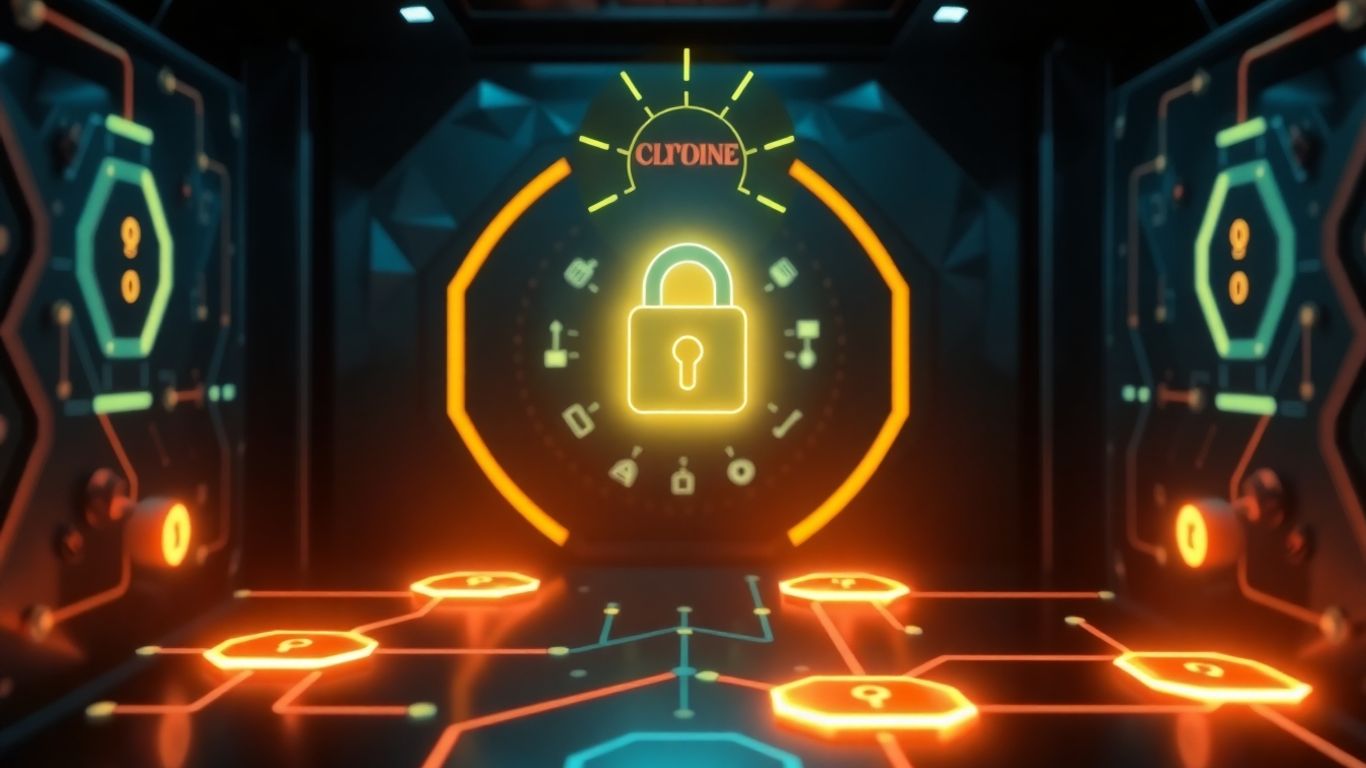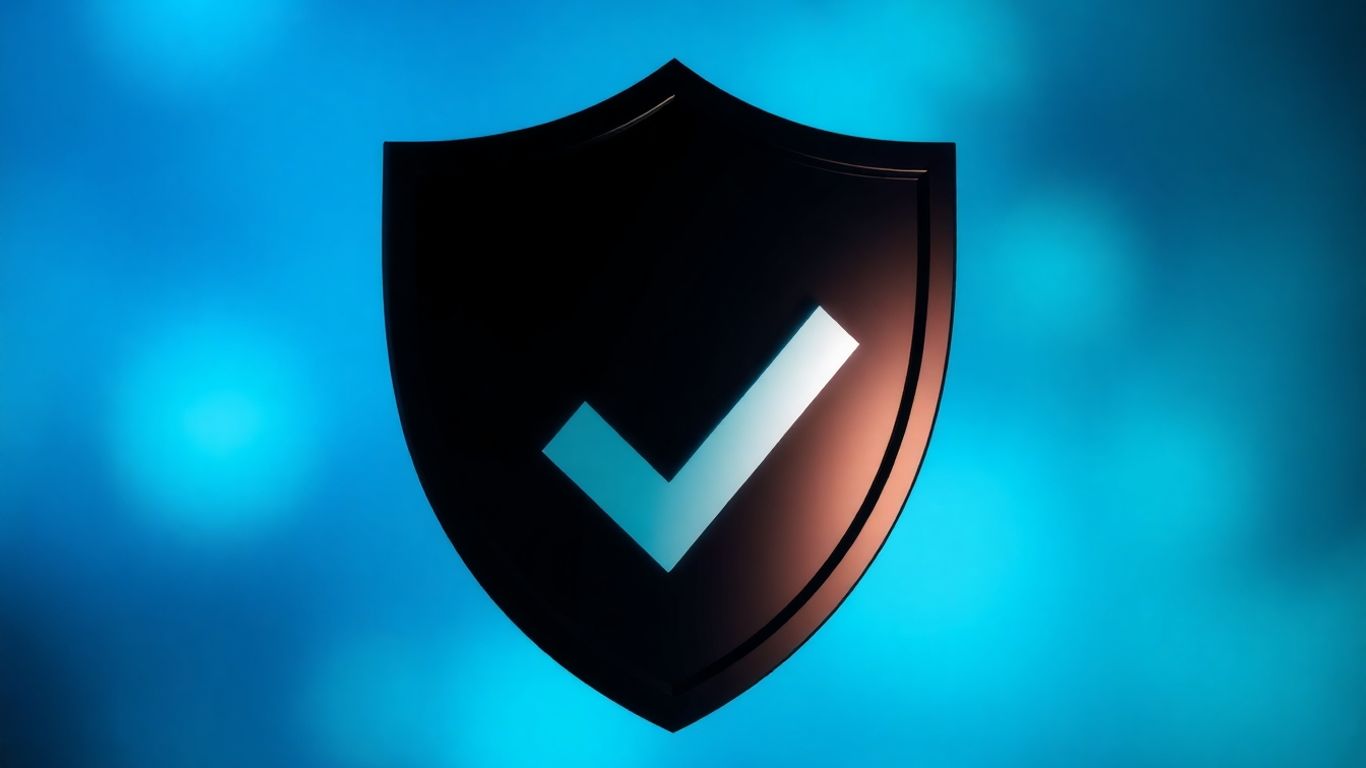[ newsletter ]
Stay ahead of Web3 threats—subscribe to our newsletter for the latest in blockchain security insights and updates.
Thank you! Your submission has been received!
Oops! Something went wrong. Please try again.
Explore MPC wallets in 2025: a comprehensive guide to advanced crypto security, key management, and benefits over traditional solutions. Choose the best MPC wallet provider.





It's 2025, and the crypto world is still dealing with a lot of money being stolen. Hackers are getting smarter, and the old ways of keeping your digital money safe just aren't cutting it anymore. Think about it: if someone gets your one secret key, they can take everything. That's a huge risk. But there's a new game in town called MPC wallets. These use a clever trick with cryptography to split up that secret key into pieces. You need a few of these pieces, working together, to actually move any crypto. This guide breaks down how these MPC wallets work, why they're way better than older methods, and how to pick one that fits you, whether you're just starting out or managing big money.

Think about how most crypto wallets work right now. You've got your private key, right? It's like the master key to your digital vault. If someone gets their hands on that single key, your crypto is gone. It's a huge risk, and frankly, it's a bit of a weak spot. Multi-Party Computation, or MPC, changes that game entirely. Instead of one master key, MPC splits that key into multiple encrypted pieces, called shares. These shares are then spread out across different places – maybe your phone, your computer, or even a secure server. No single share on its own can do anything. They only work together, using special cryptographic protocols, to approve a transaction. This means even if one of your devices gets compromised, your funds are still safe because the attacker doesn't have the complete key.
For a while, managing digital assets meant dealing with the risks of traditional wallets or the complexity of multisig setups. Traditional wallets, as we've seen, have that single point of failure with the private key. Multisignature (multisig) wallets improved on this by requiring multiple keys to authorize a transaction. However, each of those keys still leaves a trace on the blockchain, which can reveal information about the transaction, like how many approvals are needed. MPC wallets take this a step further. They perform the entire authorization process off-chain, meaning the sensitive details stay private. Instead of multiple full keys, it uses those distributed key shares and a clever algorithm. This is why many institutions, from banks to fintech companies, are moving towards MPC. It offers a much higher level of privacy and security that traditional and even multisig solutions just can't match. It's a new system built for today's more complex digital world.
Let's face it, the crypto world has seen its share of problems. In 2024 alone, billions of dollars were lost to hacks, scams, and phishing attacks. It’s clear that older security methods just aren't cutting it anymore. As cyber threats become more sophisticated, we need better ways to protect our digital assets. MPC wallets are stepping up to fill that gap. They offer a robust defense against these rising threats. Plus, with regulations becoming stricter, MPC wallets are also adapting to meet compliance needs, often integrating features like identity verification while keeping your assets secure. It's about making sure your crypto is safe without making it a hassle to use. The technology is here to make security and convenience go hand-in-hand, and in 2025, MPC wallets are the way to go for keeping your digital wealth protected. Making the switch to MPC is becoming less of an option and more of a necessity for anyone serious about safeguarding their crypto investments. You can find more information on how these wallets work by looking into MPC wallets enhance security.
The core idea behind MPC is to distribute trust. Instead of relying on one entity or one piece of data to secure everything, the responsibility is shared. This makes the whole system much more resilient because there's no single point where a failure can bring everything down. It's a smarter way to handle sensitive information in a digital age where threats are constantly evolving.

Think about how we used to manage important keys – usually, one person had the only key, right? If that key got lost or stolen, big trouble. MPC wallets completely change that game for digital assets. Instead of one master key, MPC breaks it down. It's like having a secret that's split into pieces, and each piece is held by someone different, or stored in a different secure spot. These pieces, or 'shares,' are then used together, using some clever math, to approve transactions without ever putting the whole secret back together. This is a massive shift from how things were done before.
So, how does this key splitting actually work? When you set up an MPC wallet, the private key isn't just created and stored in one place. Instead, it's mathematically divided into multiple encrypted shares. These shares are then distributed. For an individual, this might mean one share is on your phone, another is in a secure cloud backup, and maybe a third is on a separate device you keep safe. For businesses, it could be shares held by different team members or departments. The key point is that no single share, on its own, can be used to access your crypto. It's the combination of a specific number of these shares that allows for transaction authorization.
This distribution is a huge deal because it gets rid of what we call 'single points of failure.' In traditional systems, if your one private key is compromised – maybe through a hack, phishing, or just losing your hardware wallet – your funds are gone. With MPC, even if one of your key shares is stolen or lost, the others remain secure, and your assets are still protected. You'd need to compromise multiple, separate shares simultaneously to even attempt an unauthorized transaction. This makes MPC wallets incredibly resilient against common theft methods and accidental loss.
MPC wallets also offer a neat way to handle transactions that don't necessarily need to hit the main blockchain immediately. Sometimes, making a transaction directly on the blockchain can be slow or expensive, especially with high network fees. MPC allows for secure authorization processes to happen 'off-chain' – meaning, away from the main blockchain ledger. Multiple parties can agree on a transaction using their key shares, and only the final, approved transaction is then broadcast to the blockchain. This can speed things up and cut down on costs, while still maintaining a high level of security and transparency because the final transaction is still recorded on the blockchain, and the MPC process itself is cryptographically verifiable.
When we talk about keeping our digital money safe, it's easy to get lost in all the different wallet types. You've got your standard ones, then there are multisig, and now MPC is making waves. Let's break down how MPC stacks up against the others, because honestly, understanding this stuff is key to not losing your crypto.
Think of a traditional crypto wallet like a safe with a single key. You, and only you, have that key. It's simple, right? But here's the catch: if that key gets lost, stolen, or you forget where you put it, your money is gone. Poof. And hackers? They love this. They know that if they can just get that one key, they've hit the jackpot. This single point of failure is a huge risk, especially with all the phishing scams and malware out there these days. One wrong click, and your entire stash could be compromised. It's a bit like leaving your house keys under the doormat – convenient, but not exactly Fort Knox.
Multisig wallets were a big step up from traditional ones. Instead of one key, you need a few (say, 3 out of 5) to approve a transaction. This adds a layer of security because a hacker would need to compromise multiple keys. It's like needing multiple people to open a bank vault. However, multisig still has its issues. All the key activity is recorded on the blockchain, which, while transparent, can sometimes reveal more than you'd like, like how many keys are needed for a transaction. Plus, each of those keys is still a full key. MPC takes this a step further.
Instead of multiple full keys, MPC splits a private key into several 'shares'. These shares are then distributed. A hacker wouldn't just need one or two shares; they'd need a specific number of them and the cryptographic magic to put them together. It's a much harder puzzle to solve. Also, MPC does its authorization dance off-chain, meaning less sensitive information is broadcast to the blockchain.
Here's a quick look at how they differ:
Hardware Security Modules (HSMs) are physical devices designed to protect cryptographic keys. They're often used by institutions for high-security needs. While HSMs offer strong protection for the keys stored within them, they can be expensive, cumbersome, and still represent a centralized point of failure if not managed meticulously. If an HSM is compromised or fails, it can be a major issue. MPC wallets, by distributing key shares, inherently avoid this single point of failure. They offer a more flexible and often more cost-effective way to achieve institutional-grade security without relying on a single, physical device. The distributed nature of MPC means that even if one component is lost or compromised, the assets remain secure because no single entity holds the complete private key.
The core idea behind MPC is that no single party ever sees or controls the complete private key. This fundamental difference makes it significantly more resilient to attacks and operational errors compared to systems that rely on a single key or even multiple, distinct keys.
So, why should you even bother with MPC wallets? It’s not just about being trendy; there are some real, practical upsides that make them a smart move, especially now. Think of it as upgrading from a basic lock to a high-tech security system for your digital money. It’s about making things safer and, surprisingly, easier.
This is the big one, right? Traditional wallets, they’re basically a single point of failure. If someone gets that one private key, they’ve got everything. MPC wallets flip that script. They break down the private key into multiple pieces, called shards. These shards are spread out, maybe on different devices or even held by different people. For a transaction to go through, a specific number of these shards have to come together and do some cryptographic magic. This means a hacker would need to compromise multiple, independent locations simultaneously, which is way, way harder than just finding one weak spot. It’s like having multiple guards, each with a piece of the key, instead of just one.
The core idea is that the private key itself is never fully assembled in one place. The computation happens across these distributed shares, making it incredibly difficult for any single breach to compromise your assets. This distributed nature is a game-changer for security.
Okay, so security is great, but what about actually using the wallet? You might think splitting keys would make things complicated, and sometimes it can, but the best MPC wallets are designed to be pretty user-friendly. For individuals, this might mean easier recovery if you lose a device – you don't lose access to your funds because other shards are still safe. For businesses, it means setting up approval workflows that make sense for their operations. Instead of one person having to sign off on everything, you can set rules like 'two out of three managers must approve'. This speeds things up and makes sure things are done properly without creating bottlenecks.
For businesses, especially those dealing with significant amounts of digital assets, staying on the right side of regulations is a huge headache. MPC wallets can actually help here. Because transactions often involve multiple parties or systems for approval, it creates a natural audit trail. You can see who approved what and when. This makes it much easier to comply with financial regulations and to provide clear records if an auditor comes knocking. Some MPC solutions are built with compliance in mind, offering features that help track and report on asset movements, which is pretty handy for institutions.
So, you've decided to jump into the world of MPC wallets. That's a smart move, especially with how things are looking security-wise these days. But with a bunch of options out there, picking the right one can feel a bit like trying to find a needle in a haystack. It really depends on what you're trying to do and who you are – are you an individual investor just trying to keep your Bitcoin safe, or are you part of a big company managing serious assets?
For folks like you and me, who are managing our own crypto, ease of use and a straightforward recovery process are usually top priorities. You don't want to be fumbling around with complicated steps when you just need to make a quick transaction or, worse, if you lose access to your account. Look for wallets with clean interfaces and clear instructions on how to back things up or recover your funds. Some wallets even use things like facial recognition, which is pretty neat and adds an extra layer of convenience.
If you're on the institutional side, the game changes a bit. Scalability, compatibility with existing systems, and making sure everything is above board with regulations are way more important. You're probably dealing with larger sums and more complex operations, so the wallet needs to keep up.
No matter who you are, there are some common things to check. Don't just take a provider's word for it. Do a little digging.
When picking an MPC wallet, think about how the private key shares are managed. Are they spread across different devices you control, or are they held by different parties? Understanding this distribution is key to grasping the security model and potential recovery scenarios.
Here's a quick checklist:
Ultimately, the best MPC wallet is the one that fits your specific needs, whether that's the simplicity for a personal portfolio or the robust features for a large organization. Always do your own research and read reviews before committing.
MPC wallets aren't just a static solution; they're a dynamic technology that's constantly getting smarter and more integrated into the digital asset world. Think of it like this: remember when smartphones were just for calls and texts? Now they do everything. MPC wallets are on a similar trajectory.
The core of MPC is its cryptography, and that's always being refined. Researchers are working on making the computations even faster and more efficient. This means transactions could get quicker and require less processing power, which is a big deal for everyday use. We're also seeing advancements in how key shares are generated and managed, aiming for even greater resilience against sophisticated attacks. The goal is to make MPC cryptography so robust that it becomes practically invisible to the average user, yet incredibly strong against any threat.
MPC wallets are moving beyond just holding crypto. They're becoming the secure gateway to the entire decentralized ecosystem. Imagine using your MPC wallet to interact with decentralized finance (DeFi) protocols, access centralized exchange (CeFi) services, or engage with new Web3 applications, all without compromising your private keys. This integration means you can participate in staking, lending, and trading with the confidence that your assets are protected by advanced MPC security.
This is where things get really interesting. MPC technology is starting to team up with artificial intelligence. AI can analyze transaction patterns in real-time, looking for anything that seems out of the ordinary. If your wallet suddenly tries to send a huge amount of crypto to an unknown address, an AI system could flag it as suspicious, potentially stopping a fraudulent transaction before it even happens. This combination offers a proactive defense layer, working alongside the inherent security of MPC to keep your funds safe from both external hacks and internal errors.
The future of MPC wallets isn't just about securing private keys; it's about creating a secure and intelligent interface for all your digital interactions. As these technologies mature, they promise a digital asset landscape that is both more accessible and significantly more secure for everyone involved.
So, we've talked a lot about how MPC wallets work and why they're a big step up from older wallet types. It's pretty clear that with billions being lost to scams and hacks each year, relying on a single point of failure just isn't cutting it anymore. MPC wallets spread out the risk, making it way harder for bad actors to get their hands on your digital cash. Whether you're just starting out with a few bucks or managing serious funds for a business, making the switch to an MPC wallet in 2025 is a smart move. It's not just about better security; it's about peace of mind in a world where digital assets are becoming more important every day. Don't get left behind – secure your crypto future now.
Think of a regular crypto wallet like a safe with one key. If someone gets that key, they can take everything inside. An MPC wallet is like a safe that needs several special pieces of the key, held by different people or devices, to open. Even if someone steals one piece, they can't open the safe because they need more pieces. This makes it much harder for hackers to steal your crypto.
MPC wallets are super secure because they don't keep your entire secret key in one spot. Instead, they break it into tiny, encrypted parts called 'shares' and spread them out. To make a transaction, a certain number of these shares have to work together. This means a hacker would need to break into many different places at once, which is way harder than just stealing one key from a regular wallet.
Yes, MPC wallets are a big step up against hackers and scams. Because your secret key is split into pieces and scattered, it's much harder for someone to get all the pieces needed to steal your money. This is especially helpful against things like phishing or malware that try to steal your single key.
Many MPC wallets are designed to be easy to use, even for beginners. While the technology behind them is complex, the user experience is often made simple. For example, some wallets use your face or fingerprint to help confirm transactions, making it quick and secure without needing to remember complicated passwords or seed phrases.
Both MPC and multi-sig wallets need more than one approval to make a transaction. But, multi-sig wallets leave clues on the blockchain about how many keys are needed. MPC wallets do their work 'off-chain' (not on the main blockchain) using secret key pieces and special math. This makes MPC wallets more private and often more secure because they don't reveal as much information.
While MPC wallets offer great security, they can sometimes be a bit more complex to set up initially than a very basic wallet. Also, if you lose too many of your key shares, you might have trouble accessing your crypto. However, most good MPC wallets have recovery options to help you get back in if you lose a share or a device.


